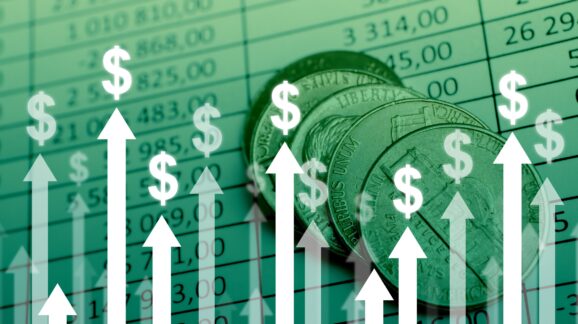Inflation Sped Up in June: What’s Going On?

Photo Credit: Getty
Last month, it had looked like inflation may have peaked. That celebration was likely premature. According to numbers released this morning, the Consumer Price Index (CPI) rose 1.3 percent in June, and is up 9.1 percent over the previous year. This is up from May’s 1.1 percent increase during the previous month, an 8.6 percent increase over the previous year. It also sets yet another 40-year high. Here are some possible reasons for the increase:
- The Fed’s actions have lag times ranging from 6 to 18 months, and we are still inside that window. The Fed did not end its $5 trillion bond buying program until March. Bond buying is how the Fed directly creates new money. March was also when the Fed began to raise the federal funds rate, which even now remains well below historical levels. Not only have the Fed’s actions so far been small, they haven’t yet had enough time to work through the economy.
- Output is down. Inflation is all about the amount of money in circulation relative to the amount of real stuff available for purchase. GDP shrank in the first quarter of 2022, and in about two weeks we’ll find out if it also shrank in the second quarter. Even if the money supply were to stay the same, shrinking output would increase inflation. The relative size of the money supply would grow relative to real output, which means inflation would go up, too.
- The velocity of money may be increasing. The velocity of money is how fast each individual dollar gets spent and re-spent. The rule of thumb is that the velocity of money speeds up during booms and slows down during busts. The main economic story of the COVID-19 pandemic is that the economy shut down for a short time, then opened back up. As expected, both M1 and M2 velocity (M1 and M2 are different money supply measures) cratered during COVID. Velocity has also stayed relatively slow ever since, as of the first quarter of 2022. If second quarter data show velocity beginning to speed up again, that would contribute to the inflation rate. We’ll find out later this month.
- CPI measures a lot of things besides inflation. CPI can’t tell the difference between inflation-related and inflation-unrelated price increases. Supply chain problems and oil shocks have nothing to do with inflation, because they don’t affect the amount of money in circulation, yet they still show up in CPI. For example, the June CPI’s readings for energy and autos are way above the CPI’s overall monthly increase of 1.1 percent. Controlling for this, which the Core CPI number does, monetary inflation in June was closer to 0.7 percent, not 1.1 percent, and is up 5.9 percent over the last year. The rest of the CPI increase is due to non-inflation reasons like supply shocks and trade barriers. Most news media and politicians are either unaware of this difference, or do not care. This bodes poorly for inflation containment, because it is difficult to solve problems when you don’t know what causes them.
If you want a one-sentence explanation for the current inflation, it’s that the Fed grew the money supply by a third during COVID, while real output grew by far less. There are other factors involved, but the money supply getting out of proportion with real output is far and away the biggest explanation. Other factors, like fiscal policy, are competing for second place.
What does this mean going forward? Inflation will stay high until at least next year because of that lag time. When it does peak and begin to come down, it will happen slowly, because the Fed has been timid. Supply chain issues and oil supply problems will continue to cause price fluctuations for affected goods; those fluctuations will continue to have nothing to do with inflation.
On the plus side, CPI systematically overstates inflation, in part because so much non-inflation noise gets caught up in it. And if inflation hasn’t peaked yet, it likely will soon. This month’s numbers may even be the peak. We shall see.